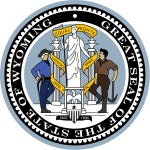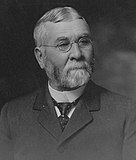
John Eugene Osborne was an American physician, farmer, banker, and politician who served as the 3rd governor of Wyoming and United States representative as a member of the Democratic Party.

The 2010 United States Senate election in Utah took place on November 2, 2010, along with other midterm elections throughout the United States. Incumbent Republican U.S. Senator Bob Bennett was seeking re-election to a fourth term, but lost renomination at the Republican Party's state convention. Mike Lee proceeded to win the Republican primary against Tim Bridgewater and the general election against Democrat Sam Granato. As of 2024, this is the most recent U.S. Senate election in which a political party held the seat after denying renomination to the incumbent senator.
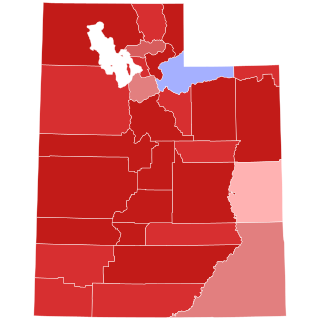
The 2016 Utah gubernatorial election was held on November 8, 2016, to elect the governor and lieutenant governor of Utah, concurrently with the 2016 U.S. presidential election, as well as elections to the United States Senate and elections to the United States House of Representatives and various state and local elections.

After previously stating that he would not run for re-election, Jason Chaffetz announced on May 19 that he was resigning his seat in the House, effective June 30. A special election was called to replace him with a filing period opening on May 19 and closing by June 30, an expected primary date of August 15, and an election day of November 7.
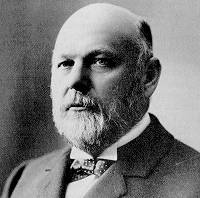
The 1910 Wyoming gubernatorial election was held on November 8, 1910. Incumbent Republican Governor Bryant B. Brooks declined to seek re-election. The leading Republican candidates to succeed him were initially former U.S. Senator Joseph M. Carey and Attorney General William E. Mullen. However, shortly before the Republican convention, Carey announced he would instead run as an independent candidate. Shortly thereafter, Mullen was formally nominated by the Republican Party. A week later, at the Democratic convention, Carey was named as the Democratic nominee for Governor. In the general election matchup between Carey and Mullen, Carey won a sizable victory, winning every county in the state, a feat that no other Democratic nominee would accomplish until Dave Freudenthal in 2006.
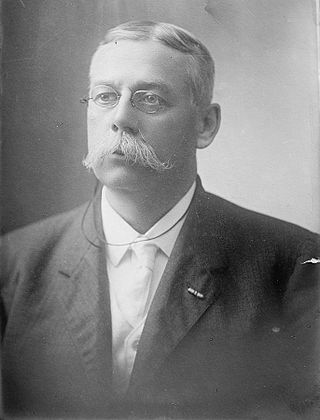
The 1890 Wyoming gubernatorial election was held on September 11, 1890, as the first gubernatorial election for the newly admitted state of Wyoming. Incumbent Territorial Governor Francis E. Warren ran for re-election as the Republican nominee against former Territorial Governor George W. Baxter, the Democratic nominee. Warren defeated Baxter by a decisive margin and became the first popularly elected Governor of Wyoming.

The 1894 Wyoming gubernatorial election was held on November 6, 1894. Democratic Governor John E. Osborne, first elected in the 1892 special election, declined to seek re-election to a second term, instead aiming to be elected to the U.S. Senate. In part because of a backlash against the Democratic Party owing to the Panic of 1893, Republicans won the governorship back from the Democrats, and would hold onto it until 1914.

The 1898 Wyoming gubernatorial election was held on November 8, 1898. Incumbent Republican Governor William A. Richards was a candidate for re-election, but he was defeated for renomination at the Republican convention, which instead nominated DeForest Richards. The Democratic Party joined forces with the Free Silver Republicans to jointly nominate former State Representative Horace C. Alger for Governor. The Populist Party, though reduced in influence from earlier elections, nominated E. B. Viall as its candidate. Though the election was closer than 1894, owing in large part to a dramatic reduction in the share of vote received by the Populist nominee, Roberts defeated Alger by a wide margin.

The 1904 Wyoming gubernatorial election was held on November 8, 1904. Shortly after he began his second term in 1903, Governor DeForest Richards died in office, elevating Secretary of State Fenimore Chatterton to the Governorship and triggering a special election in 1904 to fill the balance of Richards's term. Chatterton ran for re-election, but was defeated for renomination at the Republican convention by Bryant B. Brooks. Former Congressman John E. Osborne, the former Territorial Governor, was nominated by the Democratic Party. Aided by President Theodore Roosevelt's landslide victory over Democrat Alton B. Parker in the presidential election, Brooks overwhelmingly defeated Osborne.

The 1906 Wyoming gubernatorial election was held on November 6, 1906. Incumbent Republican Governor Bryant B. Brooks ran for re-election to a second term. After winning renomination against some intraparty challengers, he faced State Senator Stephen Keister in the general election. Brooks was ultimately able to win re-election by an overwhelming margin, setting a record for the largest majority in a state gubernatorial election, which would not be exceeded until Governor Stanley Hathaway's re-election in 1970.

The 1924 Wyoming special gubernatorial election took place on November 4, 1924. William B. Ross, the Democratic Governor of Wyoming, died in office on October 2, 1924, temporarily elevating Republican Secretary of State Frank Lucas to the governorship. A special election was held to fill the remainder of Ross's term and his widow, Nellie Tayloe Ross, defeated Republican nominee E. J. Sullivan in a landslide becoming the first ever female governor of any U.S. state.

The 1912 Utah gubernatorial election was held on November 5, 1912. Incumbent Republican William Spry defeated Democratic nominee John Franklin Tolton with 38.17% of the vote against his 32.36% in a four way race, with Progressive nominee Nephi L. Morris winning 21.16% of the vote, and Socialist nominee Homer P. Burt winning 7.89% of the vote.

The 1892 Idaho gubernatorial election was held on November 8, 1892.

A general election was held in the U.S. state of Wyoming on Tuesday, November 5, 2002. All of the state's executive officers—the Governor, Secretary of State, Auditor, Treasurer, and Superintendent of Public Instruction—were up for election.

A general election was held in the U.S. state of Wyoming on September 11, 1890, to elect the state's executive officers—the governor, secretary of state, auditor, treasurer, and superintendent of public instruction—which were created in the state constitution adopted in 1889. This was the first election in which these offices were for election. The Republican Party performed well, carrying all of them by double-digit margins.

A general election was held in the U.S. state of Wyoming on Tuesday, November 7, 1922. All of the state's executive officers—the Governor, Secretary of State, Auditor, Treasurer, and Superintendent of Public Instruction—were up for election. Democrats improved considerably from their performances in 1918, with William B. Ross winning the gubernatorial election and almost all of their statewide candidates outpacing their 1918 nominees. However, Republicans held all of the other statewide offices.

A general election was held in the U.S. state of Wyoming on Tuesday, November 6, 1894. All of the state's executive officers—the Governor, Secretary of State, Auditor, Treasurer, and Superintendent of Public Instruction—were up for election. The Republican Party, helped by the strong performance of the Populist Party, which operated as a spoiler to the Democratic Party, won back the governorship and improved its margin of victory in all other statewide offices.

A general election was held in the U.S. state of Wyoming on Tuesday, November 8, 1910. All of the state's executive officers—the Governor, Secretary of State, Auditor, Treasurer, and Superintendent of Public Instruction—were up for election. Former U.S. Senator Joseph M. Carey won the gubernatorial election, securing the first Democratic win for Governor since 1892. Democratic candidates unseated Republican incumbents in the elections for Secretary of State and Superintendent of Public Instruction, and Republicans narrowly held open seats in elections for State Auditor and Treasurer.

A general election was held in the U.S. state of Wyoming on Tuesday, November 5, 1918. All of the state's executive officers—the Governor, Secretary of State, Auditor, Treasurer, and Superintendent of Public Instruction—were up for election. Republicans won all statewide offices by wide margins, and with Robert D. Carey's defeat of Frank L. Houx, picked up the governorship following two consecutive losses to Democrats.

All 62 members of the Wyoming House of Representatives were elected on November 8, 2022, as part of the 2022 Wyoming elections. Primary elections were held on August 16. Republicans expanded their supermajority, gaining six seats.

